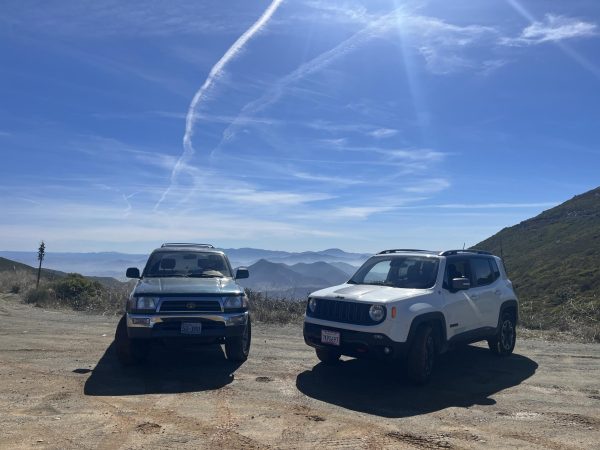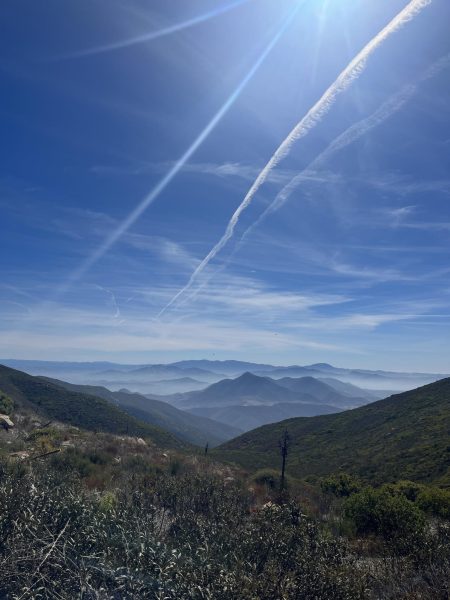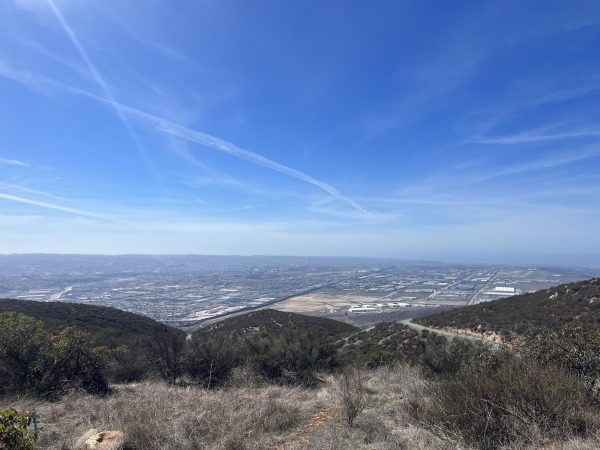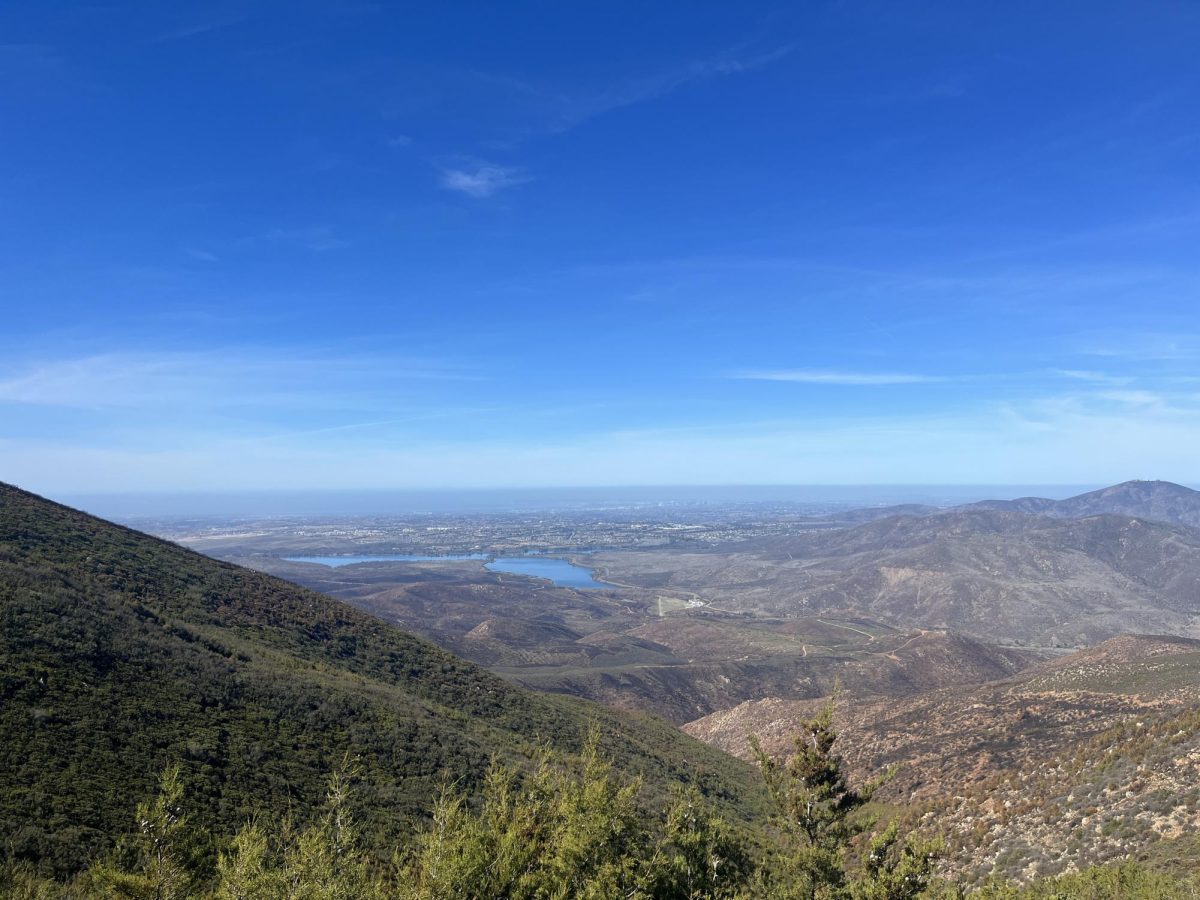On a Saturday morning, Julio and Kelly set out from La Jolla. It was 9 a.m. — early for these college students’ schedules. Julio drives a Toyota 4Runner, and Kelly drives a Jeep Renegade, both cars with four-wheel drive capabilities and perfect for an off-roading adventure. With clear blue skies and a warm winter sun, the two of us began our journey to Otay Mountain.
So, how did we end up on this adventure?

We had been making plans to take our vehicles off-road since finding out we both had capable cars. The great thing about the off-roading community is that it’s not about how experienced you are or how much you know about cars; it’s purely about going outside and exploring the outdoors. So, contrary to what most would consider a relaxing Saturday afternoon, we chose to embark on this off-road escapade, saying, “You got soft hands, brother,” to all the haters. As we shifted into four-wheel drive, locked our rear differentials, we left them sitting in a cloud of dust and loose gravel.
Stop 1: Perilous beginnings
According to our prior research — as in, checking Google Maps — we were to enter through the north entrance at Pio Pico Campground. But when we arrived, we found the trail closed, supposedly due to an active Border Patrol investigation. A fellow off-roader pulled up in a tricked out Toyota 4Runner and sweet-talked the park rangers into letting us onto the trail.
Excited that our long trip down Interstate 805 did not go to waste, we followed the park employees to the gate after they made a few calls, but as we were driving up to the trailhead, two Border Patrol vehicles menacingly drove past us. They shot piercing gazes at us through their wraparound sunglasses, their vehicles covered in dried mud, but left us alone — for now.
Stop 2: A breathtaking view

After this apprehensive start, we shook off our worries and set off along the gravel and sand trail, stopping occasionally for the picturesque views of Otay Lake. That said, this was not a “Beginner Friendly Trail,” despite what Google Maps advertised. It featured steep inclines, numerous hairpin turns, and steep 30-foot drops off to our right side.
Eventually, we reached a junction at the top of the mountain. We pulled into an overlook and were met with breathtaking scenes of southern San Diego County. Looking south, the vastness of the Otay Mountain was covered by a light haze over the foothills of the mountain, like a low distance rendering in a video game. To the left, we noticed a road leading to a radio tower on a nearby peak.
Before we could reach the tower, we were stunned by the sight of another Border Patrol vehicle. Luckily, the officers did not seem to be interested in us — and we were not about to give them a reason to be — so we swiftly made our way back to our vehicles and drove off. Then, we heard the familiar buzz of a helicopter overhead. We looked up to find a black military helicopter circling and scanning the area in search of something. This was our sign to get going.
Stop 3: A WWII bunker
We had heard of an abandoned WWII bunker nearby, so we decided to make our way there. The views from the bunker were alright. Besides a mountain covered in greenery and faint outlines of mountains in the distance, there was nothing more to see. The bunker was simply a concrete box with a gated door, no windows, and a chilly interior littered with handfuls of bullet casings and broken bottles. Outside, we spotted a car door filled with bullet holes — it was clear that Otay had served as an ideal remote makeshift gun range.
Spotting a steep rocky incline in the near distance, we felt called to drive up it. The incline was initially smooth, but the middle section proved to be challenging with multiple rocky divots that had to be avoided.
We assigned Julio to be the spotter while Kelly followed not far behind. Inch by inch, we crawled to the very top of the hill and were ecstatic about having rock-crawled for the very first time!

Stop 4: Mountain views of the border wall
Afterward, we continued along the main road. To our right was greenery and open space, with the Pacific Ocean barely visible beyond the marine layer. To our left, we saw a skyline of buildings and roads intertwining, displaying the city’s liveliness. We had a perfect view of the U.S.-Mexico border, including the wall itself, which seemed to stretch far past the infrastructure of the neighboring roads and towns. We were both amazed by this perspective because we had never seen the border except when crossing into Tijuana.
The way back down the mountain was just as treacherous as the journey up. We had to travel slowly, as every decline with a gradient greater than 10 degrees became a fight to save Julio’s brakes — the downsides of off-roading with a 30-year-old vehicle.
Stop 5: A dangerous encounter
Making our way down the mountain, we passed by even more Border Patrol agents. At one point, one even got caught behind us, and as we let them pass, they rolled by with the same intimidating stare as their fellow agents from before.
As we finally neared the bottom of the mountain, we saw what seemed like Border Patrol agents questioning and detaining two men. To avoid being stopped and questioned ourselves, we made sure not to rubberneck for too long, but our swiftness to avoid the situation was not enough. As we pulled up to the big yellow gate at the trailhead, we were blocked by yet another Border Patrol vehicle.
A younger-looking man stepped out of the vehicle. For a few tense moments, we waited as the man approached. Julio rolled down his window.
“You’re not supposed to be here,” the agent said when he came up to Julio’s car, with Kelly watching from behind. Though we explained how park agents let us in, the agent repeated firmly that people are only allowed off the trail from a different direction. “Could you roll your back window down for me?” the agent asked. He took a quick look in our respective backseats.
“I’ll let you guys out, but you guys are lucky that someone was here to do so. Usually this gate is closed.”
As he walked back to his vehicle and reversed it to clear a path, we thanked him, driving past and touching the pavement for the first time since the morning. It felt so good to be back on the smooth road again.
Stop 6: Burritos and debrief
After our eventful day, we were ravenous. We found a Filipino-Mexican fusion restaurant on our ever-reliable Google Maps and headed off to MJ’s Yogurt Time and Deli.
We each got the house-famous 805 Burrito, named after the highway that runs through central San Diego. The protein was cooked with Filipino influences — Julio got longanisa and Kelly had braised marinated pork. Imagine a California burrito with added lumpias the length of an arm. We absolutely devoured both.
As we sat eating our burritos, we debriefed our day of firsts For Kelly, this was her first time putting her Jeep to the true off-road test. For Julio, this Mexican and Filipino fusion food was a first. What neither of us expected was our first-hand encounter with the day-to-day operations of the U.S. Border Patrol Agency — a stark change of pace for two sheltered UCSD students. It was humbling to think about how lucky we were to be let off without so much as a warning, knowing that many of our community do not have this privilege.
Our encounter with Border Patrol was certainly not the standard. As we wrote this piece, we discovered that Border Patrol committed over 1.5 million enforcement actions in 2024. Upon reflection, we realized how unprepared we were to protect our peers and resolved to improve. So, what can you do if you or someone you know encounters Border Patrol? Remember that you have the right to not answer questions about your immigration status if approached on the street, and if you are detained by immigration officers, you have the right to an attorney and visits from family members. And remember that we have your back.
While we wanted our chronicles of off-roading in San Diego to stay light, the reality of our society prevents that. Our experience this Saturday reminded us that the best ways to have fun must also include protecting one another, and at the end of the day, our trip was an important reminder of how much of a privilege of free travel is and how staying informed can help us stay safe.












